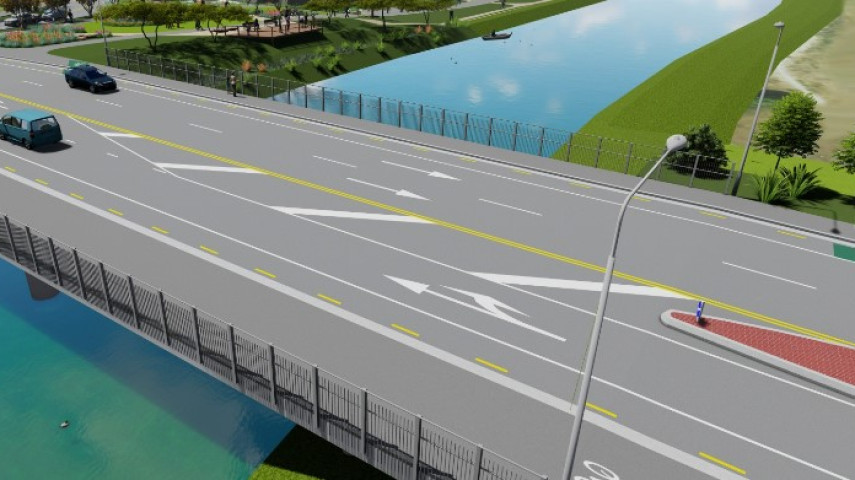We’re upgrading the gateway into New Brighton, including the Pages Road Bridge, which is key to improving the emergency evacuation of the area.

Sign up to our Pages Road bridge renewal newsletter

Our plans include better road alignments, road safety upgrades and traffic flow improvements, to make it safer to get in and out of New Brighton. And of course, we want it all to look great too, so landscaping is an important part of the project.
Key changes include a replacement bridge across the Ōtākaro-Avon River, a new T-intersection and traffic lights to replace the Pages Road, Hawke Street and Seaview Road roundabout, Pages Road westbound increasing to two lanes, underground utility and three waters upgrades, and other intersection modifications, kerb buildouts, pedestrian crossings and parking changes.
The new bridge and road will be more resilient to future earthquakes and the effects of climate change. It will be designed to improve access for everyone, from truck and car drivers to cyclists and dog walkers, and everyone in between. And importantly, this project will also provide for large volumes of traffic to exit New Brighton and the surrounding suburbs during planned and unplanned events.
The work to upgrade Pages Road and build the new bridge will require changes to eight nearby roads. These are Hawke Street, Owles Terrace, Hardy Street, Seaview Road, New Brighton Road, Rawson Street, Pratt Street and Keyes Road.
The existing Pages Road Bridge, which was built in 1931 and is the main route across the Ōtākaro-Avon River into New Brighton, suffered significant earthquake damage in 2011.
It is currently operating at about 15% of the New Building Standards so is earthquake prone.
During the earthquakes Pages Road also buckled and dropped in places, affecting drainage. Short-term emergency repairs have served their purpose, but it’s now time for a new bridge, and for the road to be upgraded to be even better than it was before the earthquakes.
The replacement bridge and approach roads will be more resilient, have increased capacity in emergency evacuations and will be built at a higher level allowing for sea level rise and incorporating future stop banks along the Ōtākaro Avon River.
Work in the surrounding area will also provide more walking and cycling connectivity to New Brighton. The current roundabout area will also become a small park featuring the existing palm tree, providing a community facility.
The new bridge and traffic lights will be slightly north of the current position. A benefit of this is to allow the existing bridge to be used while construction is underway.
- The Council ran early engagement and public consultation throughout 2023. Read more about the consultation and the resulting decision(external link).
- A Hearings Panel met in early 2024 to consider submissions and made recommendations. These were approved by the Council in August 2024.
- A number of changes were made to the design to incorporate feedback received during the consultation and the Hearings Panel process.
- A funding subsidy application was submitted to New Zealand Transport Agency Waka Kotahi in May 2025 to seek a contribution to the project. This was approved in August 2025, with central government committing to $38.5 million in funding towards the project.
Central government has committed to $38.5 million in funding towards the project, following an announcement by Associate Transport Minister James Meager in August 2025. The funding decision was made at a NZ Transport Agency Waka Kotahi (NZTA) Board meeting on 8 August 2025, where they endorsed the Council’s business case for a new Pages Road bridge and upgrade to surrounding streets.
The central government funding will come from the National Land Transport Fund (NLTF).
The Council has also allocated funding through our 2024-2034 Long Term Plan for the project.
Procurement for Detailed design and Construction will commence following a decision being made by New Zealand Transport Agency-Waka Kotahi (NZTA) on the funding subsidy application. Central government has committed to $38.5 million in funding towards the project Due to the sensitive nature of the surrounding area, it is likely that gaining consents will take time. Council have already started working with our partners at Environment Canterbury to understand their requirements.
The elements of the project likely to be designed and built in the first phase of the project will be Pages Road, the new bridge, The Seaview Rd and Hawke Street T-Intersection, The New Pocket Park and modifications to the nearby road’s intersections in conjunction with the council approved scheme design. The full renewal of the nearby roads will be built at a later date when additional funding is available.
We are currently expecting the design to be complete and consents granted, ready for us to start construction, in the first half of 2028. There is opportunity to commence the construction earlier if consents are approved quicker than expected. The project scope mentioned in the first phase above is likely to take between 18 and 24 months to construct.
The new bridge and traffic lights will be slightly north of the current position, so the existing bridge can be used while construction is underway.
